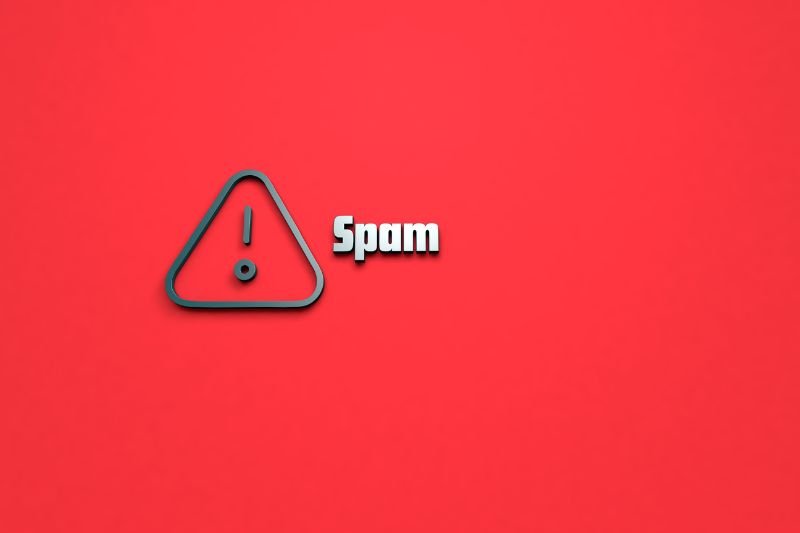Bounced emails – whether marketing or commercial – are common in email marketing.
But, if you take precautions or follow the best email marketing practices, you can reduce your email bounce rate and eventually lower the chance of ending up in the spam folder.
So, let’s dive in to learn why your Yahoo emails are bouncing back and the proven strategies to stop bounces from happening again.
The Reasons Your Yahoo Emails Bounce
When using Yahoo Mail, there are various factors why your email bounces back. Some common causes are as follows:
- Invalid Email Address/ Inactive Yahoo Accounts – This happens when you enter a misspelled or incorrect email address. Ensure accuracy by double-checking your recipients’ email addresses.
Yahoo Mail’s timeframe for disabling inactive accounts in 2024 is 12 months. However, there’s a chance you could recover and gain access to your Yahoo account after a year of inactivity. If not, you may need to create a new one.
- Blocked or Blacklisted Sender – Yahoo Mail has complex spam filtering measures designed to detect and move potential spam to the junk folder automatically. It evaluates certain factors, such as the content, timestamp, and sender reputation.
If your domain or email address has been blacklisted or flagged as spam, your Yahoo emails may bounce back.
To pass through the spam filter, ask users to add you to their contact list, send relevant content, maintain a good sending frequency, and use Yahoo spam filter tools. Ensure you adhere to the best email practices and have a clean sender reputation.
Want to perform a Yahoo Blacklist Check? Here’s a definitive guide for you.

- Bad DNS Records – A recipient server may reject Yahoo emails if the sender domain has bad DNS records. For instance, if the recipient server sees any discrepancies in the SPF and DKIM, it could result in an email bounce back (554 SMTP error).
- Recipient’s Mailbox Full – Another reason why emails bounce is because the recipient’s inbox is full. Your contact can only receive your email when there’s space for them.
- Low Sender Reputation Score – Your email marketing campaigns will be more vulnerable to Yahoo spam filters and get a higher bounce rate if you have a low sender reputation score. It happens if you continue sending emails after several bounces.
- Email Content Violations – We mentioned earlier that Yahoo Mail has filters, and one of its functions is to scan emails for possible violations. These include having suspicious attachments, inappropriate content, or phishing attempts. If your content triggers any of these, it may bounce back.
- Yahoo Cleanup Initiative – Since June 2013, Yahoo has embarked on a cleanup initiative targeting dormant Yahoo email addresses (not accessed for over a year). This resulted in email bounce-backs.
Unsure if you have deliverability issues? Run a free email spam test tool from InboxAlly.
How Long Should You Wait For a Soft Bounce Back?
If you encounter a soft bounce back or a temporary bounce back error, wait for a few hours or up to 24 hours before re-sending the email. The time you wait to re-send your email generally depends on the bounce-back message you received.
For instance, if you receive the SMTP 421 (Server Temporarily Not Available) bounce-back message, the mail queue is full. Try resending your message at a later time.
9 Strategies to Overcome It

Fortunately, email bounces show up quickly after you send your campaign. This makes it easy to detect email addresses that require your attention.
For instance, you receive a message “Over Quota” or “Mailbox Full.” With that error message alone, you already know your recipient’s email account has reached its storage limit.
On the other hand, if you receive a message, “Attachment Violation” or “Message Contains Malware,” you know that Yahoo is simply protecting its users from malicious content.
Now, let’s take a look at some strategies to overcome Yahoo Mail bounce-back errors.
1. Authenticate Your Emails
Authentication is a process of verifying the integrity and legitimacy of an email, creating trust between the recipients and the senders. It relies on various standards and methods, including the Sender Policy Framework (SPF), Domain-based Message Authentication, Reporting, and Conformance (DMARC), and DomainKeys Identified Mail (DKIM).
By implementing these three types of authentication processes, it helps the recipient server to check the authenticity of incoming emails. If the receiver server obtains the records from your email, your bounce rate will be reduced.
Related Post: SPF Limit: It’s Not as Difficult as You Think
2. Maintain a Healthy Email List
We cannot emphasize this enough – weed out invalid contacts from your list. This strategy is a must because for an email campaign to be effective, it needs to land in someone’s inbox first.
You may use email verification services that detect spam traps, role-based emails (contact@ or office@), and abuse emails that belong to complainers.
However, be mindful that email verifiers have limitations. In particular, they face challenges in validating “disabled” Yahoo accounts – those that do not accept messages until the owner logs in. In effect, emails sent to these Yahoo accounts bounce back despite the email verifier marking them previously as “deliverable.”
3. Remove Unengaging Subscribers
Most email marketers have a hard time letting go of subscribers. However, remember that it’s a part of building a healthy email list. The best practice is to remove the dormant accounts that have not engaged with any of your emails in the last six months.
Removing subscribers who haven’t engaged with your campaigns for a long time helps keep email bounces at bay, preserves your sender’s reputation for a longer period, and keeps your campaign away from spam traps.

4. Use Double Opt-in Process (Subscription + Confirmation Emails)
Encourage subscribers to validate their email addresses via a double opt-in process. This ensures that all email addresses you gather are owned by subscribers and are valid.
5. Segment Your List
Reduce email marketing bounce rates by segmenting your list. You can divide them based on demographics, behavior, or engagement levels.
Doing so will help you know who to email first. Your emails will be less likely to bounce if you email to the most engaged subscribers first because you will show the ESP spam filters that your content is engaging to recipients.
That’s what InboxAlly is for.
It’s a unique deliverability tool that teaches Yahoo Mail and other inbox providers to understand that the emails you send are valued by your recipients. Book a live demo to learn more.
6. Monitor Your Bounce Codes
Yahoo! recycles email addresses, a practice that challenges email marketers. New account owners who have inherited recycled email addresses may mark your email as spam. This can lead to massive Yahoo bounces.
This is why it’s vital to check your engagement rates and bounce codes regularly. Check the patterns in spam complaints to gain insights into possible issues.
7. Build Non-Spammy Content
Another important email marketing practice that reduces email bounce rate is to avoid writing spammy content. It means not adding any spam trigger words, which are blacklisted by some Email Service Providers (ESPs).
For instance, the receiver ESP would assume emails to be promotional content or spam if they contain “Off,” “50%,” and “Free” in their email body.
Avoid adding too many links, as the receiver server will suspect it is a phishing activity and bounce back the email. Avoid exclamation marks, bold, and CAPS in your content, too.
8. Get a Dedicated IP Address
If you send mass emails, consider using a dedicated IP address, as this will help you take complete ownership of your sender’s reputation.
There are a lot of email marketers nowadays that put multiple clients on a shared IP address. So, even if one maintains professional and permission-based email practices, others don’t. And those who don’t follow good email marketing practices pollute the shared IP address.
9. Check Your Sender Reputation
Review your sender reputation to ensure that your domain or email address is not blacklisted or blocked. You can use reputation monitoring tools.
Visit the Yahoo support page and contact their postmaster for further help.

Conclusion
One of the easiest ways to prevent your Yahoo emails from bouncing back is to rely on a professional service that handles deliverability issues, like InboxAlly.
This is the most effective and easiest method to eliminate email bounces and secure your email deliverability. Negative deliverability damages your reputation, as Internet Service Providers (ISPs) may label you an illegitimate sender.
On your behalf, the tool sends your emails to genuine Yahoo email addresses to create a good email engagement. Your emails will be marked as important, eventually training the email service provider to land your future emails in the inbox.
Nobody wants their emails bounced back or end up in the spam folder, and we’re sure you don’t want it, too. Overcome it and reduce your email bounce rate by following the strategies mentioned in the guide.
Thanks for reading till the end. Do better with Yahoo email marketing using InboxAlly. Start your free trial today.